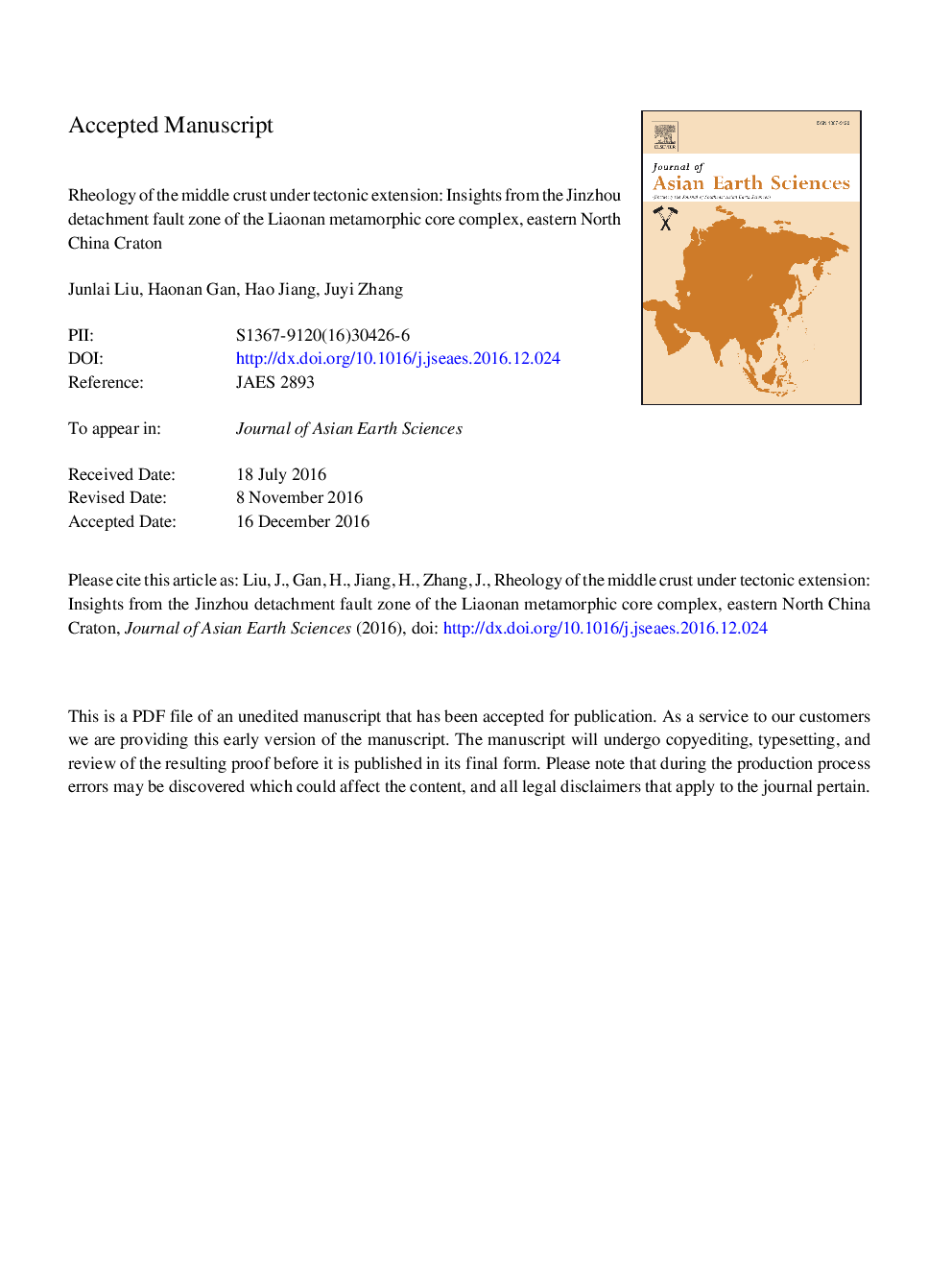| Article ID | Journal | Published Year | Pages | File Type |
|---|---|---|---|---|
| 5786150 | Journal of Asian Earth Sciences | 2017 | 36 Pages |
Abstract
The Jinzhou detachment fault zone comprises a thick sequence of fault rocks of middle to shallow crustal depths. Three types of mylonitic rocks characterize middle crustal deformation along the detachment fault during early Cretaceous lithospheric extension. Microstructural and fabric studies reveal that these fault rocks were formed via different mechanisms of crystal plastic deformation and dynamic recrystallization at temperatures from ca. 300 to 650 °C. The flow stresses at different crustal depths were calculated using classical paleopiezometers. This study suggests that a pre-heated crust was responsible for the low flow stresses during the Jinzhou detachment faulting, which is somehow different from, e.g., the Whipple Mountain detachment faulting in the North American Cordillera. Based on inferences about the properties of middle to upper crustal flow associated with the Jinzhou detachment faulting, it is suggested that the Liaonan metamorphic core complex was formed by tectonic extension of cratonic lithosphere with a normal crustal thickness, instead of being a typical Cordilleran-type core complex that occurred in a setting with overthickened crust.
Related Topics
Physical Sciences and Engineering
Earth and Planetary Sciences
Geology
Authors
Junlai Liu, Haonan Gan, Hao Jiang, Juyi Zhang,
